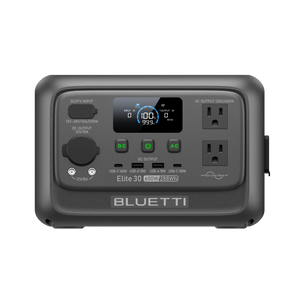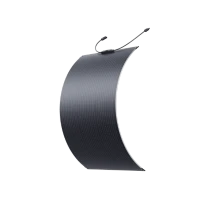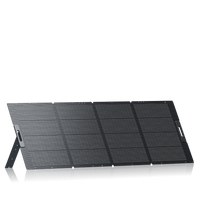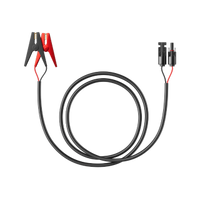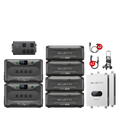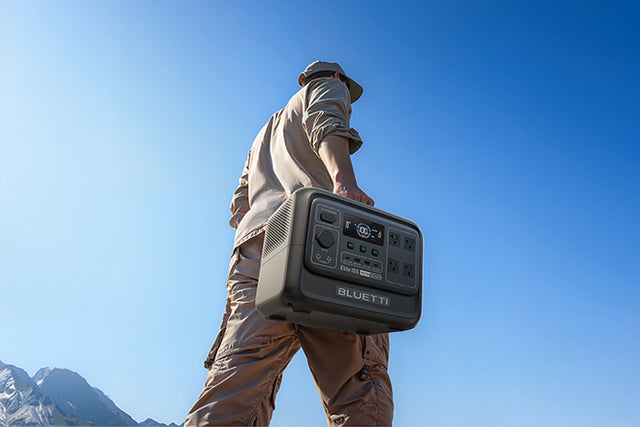Your cart is empty
Shop our productsUnderstanding the relationship between volts, watts, and amps is essential for anyone working with electrical systems or appliances. Knowing how to calculate amps from volts and watts is a fundamental skill. This fact is even true regardless of your profession or interest.
Amps represent the current flowing through a circuit and volts measure the electrical potential difference. However, watts quantify the power consumed or produced. It is important to grasp the formula and principles behind these units. With this, you can accurately determine the amperage of a circuit based on the voltage and wattage involved.
This guide will explore the process of calculating amps from volts and watts. This knowledge will empower you to make informed decisions regarding electrical systems. It will also help you safely manage the power requirements of various devices.
The relationship between amps, volts, and watts
The relationship between amps, volts, and watts is governed by a fundamental formula known as Ohm's Law. Ohm's Law states that the current flowing through a circuit is directly proportional to the voltage applied across it and inversely proportional to the resistance of the circuit. Mathematically, Ohm's Law can be represented as:
I = V / R
Where:
I represents the current in amps (A)
V represents the voltage in volts (V)
R represents the resistance in ohms (Ω)
In many practical situations, the resistance of a circuit remains constant. In such cases, Ohm's Law can be rearranged to determine the relationship between amps, volts, and watts using the formula:
P = V * I
Where:
P represents the power in watts (W)
V represents the voltage in volts (V)
I represent the current in amps (A)

Importance of understanding these electrical units
Understanding electrical units such as amps, volts, and watts is important for several reasons:
-
Safety: Electrical systems can pose significant risks if not properly understood and managed. Comprehending the relationship between amps, volts, and watts, can ensure that circuits are appropriately designed. This helps to avoid overloads that could lead to electrical fires or damage to equipment. This knowledge also helps select the correct wire gauge and circuit breakers to handle the expected current load.
-
Electrical Installations: Regardless of your level of experience, understanding these units allows you to make informed decisions. You can calculate the appropriate wire size, voltage requirements, and circuit capacities. This estimation ensures that electrical installations are efficient and compliant with safety standards.
-
Energy Efficiency: It is important to know the power consumption of various appliances and devices in watts. This ensures that you can make informed decisions about energy usage. This understanding helps you select energy-efficient appliances and optimize energy consumption. This ultimately leads to cost savings and reduced environmental impact.
Understanding the Basic Concepts
Understanding the basic concepts of electrical energy and power is important to ensure safety. Some terms to take note of are introduced as follows:
-
Amps: Amps is a unit of electrical current. It is a measure of the rate at which electric charge flows through a circuit. One ampere is defined as one coulomb of charge passing through a point in a circuit per second. In practical terms, amps indicate the amount of electrical current flowing through a conductor at any given time. Higher amperage signifies a greater amount of current. However, lower amperage indicates a smaller current flow.
-
Volts: Volts are the standard unit of electrical potential difference or voltage. Voltage represents the amount of electrical potential energy per unit charge in an electrical circuit. Volts measure the force or pressure that drives the flow of electric current. Voltage can be thought of as the "push" or "electromotive force" (EMF) that propels electric charges through a circuit.
-
Watts: Watts are the standard unit of power in the International System of Units. Power represents the rate at which work is done or energy is transferred or converted per unit of time. Watts specifically quantifies the power consumed, produced, or dissipated in an electrical circuit or device.
The Mathematical Relationship between Amps, Volts, and Watts
The mathematical relationship between Amps, Volts, and Watts is written as:
Amps = Watts / Volts
The mathematical relationship between amps, volts, and watts can be described by one fundamental formula: Ohm's Law

Ohm's Law: Ohm's Law states that the current flowing through a circuit is directly proportional to the voltage applied across it and inversely proportional to the resistance of the circuit. Mathematically, Ohm's Law can be expressed as:
I = V / R
Where:
I represents the current in amps (A)
V represents the voltage in volts (V)
R represents the resistance in ohms (Ω)
This formula shows that the current flowing through a circuit is equal to the voltage across the circuit divided by the resistance of the circuit. It indicates that for a given voltage, higher resistance will result in lower current flow and vice versa.
This formula allows for the calculation of one electrical quantity if the values of the other two quantities are known. Manipulating this formula can help individuals determine the current flowing through a circuit based on the voltage and resistance. It can also help calculate the power consumed or produced in a circuit based on the voltage and current.
Step-by-Step Guide on How to Calculate Amps from Volts and Watts
This guide has already stressed the importance of understanding how to estimate amps from Volts and Watts. A step-by-step process introduced below will explain better:
Step 1: Identify the given values (Watts and Volts)
In this equation, involving three variables, having the value of two known variables is essential. For this, estimating amps involves identifying the values of Watts and Volts.
Step 2: Insert the values into the formula
The next step is to fix these values in the equation: Amps = Watts / Volts
Step 3: Perform the calculation
The calculation is a straightforward division of Watts by Volts
Step 4: Interpret the result
The result derived is the rate at which electric charge flows through a circuit.
Introducing BLUETTI Power Stations
Having a BLUETTI power station comes with certain benefits. First, BLUETTI power stations can provide electric power even when grid power is unreliable or unavailable. These situations may include the following:
-
Outdoor activities
-
Emergencies
-
Camping trips
-
Construction sites
Some top-quality BLUETTI power stations are introduced as follows:
1. BLUETTI AC60
This power station is built for outdoor adventures. BLUETTI AC60 is an all-weather solar generator, which is capable of supplying 600W power from its 403Wh LFP battery. BLUETTI AC60 is compact at 8.6kg and can maintain its efficiency in the harshest conditions. It boasts fast charging and flexible capacity.
2. BLUETTI AC180
This portable power station is driven by turbocharging with up to 1,440W input. Recharging from 0% to 80% only takes 45 mins. BLUETTI AC180 is designed with a 1,152Wh power center, which can cover your power demand for an entire day.

3. BLUETTI AC200MAX
BLUETTI AC200MAX Expandable Power Station comes with some exciting features:
- 2200W AC Pure Sine Wave Inverter (4800W surge)
- 2,048Wh Capacity
- Expandable Up to 6,144Wh with 2×B230, or 8,192Wh with 2×B300
- LiFePO4 Battery with 3,500+ Life Cycles to 80%
- 7 Ways to Recharge (AC/Solar/Car/Generator/Lead Battery/Dual AC/AC+Solar)
- 900W Max. Solar Input
- 1,400W Max. Fast Dual Charging (Solar + AC Adapter)
- Smart Control & Monitor in BLUETTI App
These power stations are all cost-effective, which implies that they can significantly reduce energy bills.
Related articles: What Will A 2000 Watt Solar Generator Run?
What Will A 3000 Watt Solar Generator Run?
Common Mistakes to Avoid
Some mistakes to avoid are explained as follows:
1. Incorrectly identifying the given values:
Once you identify the wrong values, the result of the calculation will be wrong. A wrong interpretation will result in unwanted consequences. For this reason, the correct identification of the given values is important.
2. Misapplying the formula:
Another common mistake users make is the misapplication of the formula. Regardless of the accuracy of the values you identified, the wrong formula will generate the wrong results.
Final Thoughts
The relationship between Amps, Volts, and Watts is essential to calculate these basic terms. This estimation helps to ensure safety, complete electrical installations, and energy efficiency. The formula that can calculate Amps from Volts and Watts is a basic one, as mentioned above. Be that as it may, there is a lot to learn and understand about the applications of these concepts. For those who need a reliable power source, BLUETTI products are the right options to explore.
FAQs
1. How do I calculate amps from volts and watts?
Ans: Use the formula: Amps = Watts / Volts.
2. Can I calculate amps if I know only volts or watts?
Ans: No, you need to know at least two of the three variables (amps, volts, and watts) to calculate the third.
3. How does voltage affect amperage?
Ans: Amperage is directly proportional to voltage according to Ohm's Law. Higher voltage leads to a higher amperage if the resistance remains constant.
4. Is it possible for amps to be higher than watts?
Ans: No, it is not possible. Since power (watts) equals the product of amps and volts, amps cannot exceed watts.
5. What information do I need to calculate amps from volts and watts?
Ans: You need to know the voltage (volts) and power (watts) to calculate the amperage (amps).
Shop products from this article
Be the First to Know
You May Also Like

Deadly Flooding Devastates U.S. South and Midwest — What You Need to Know

BLUETTI Teams Up with Leave No Trace to Power Sustainable Outdoor Adventures

